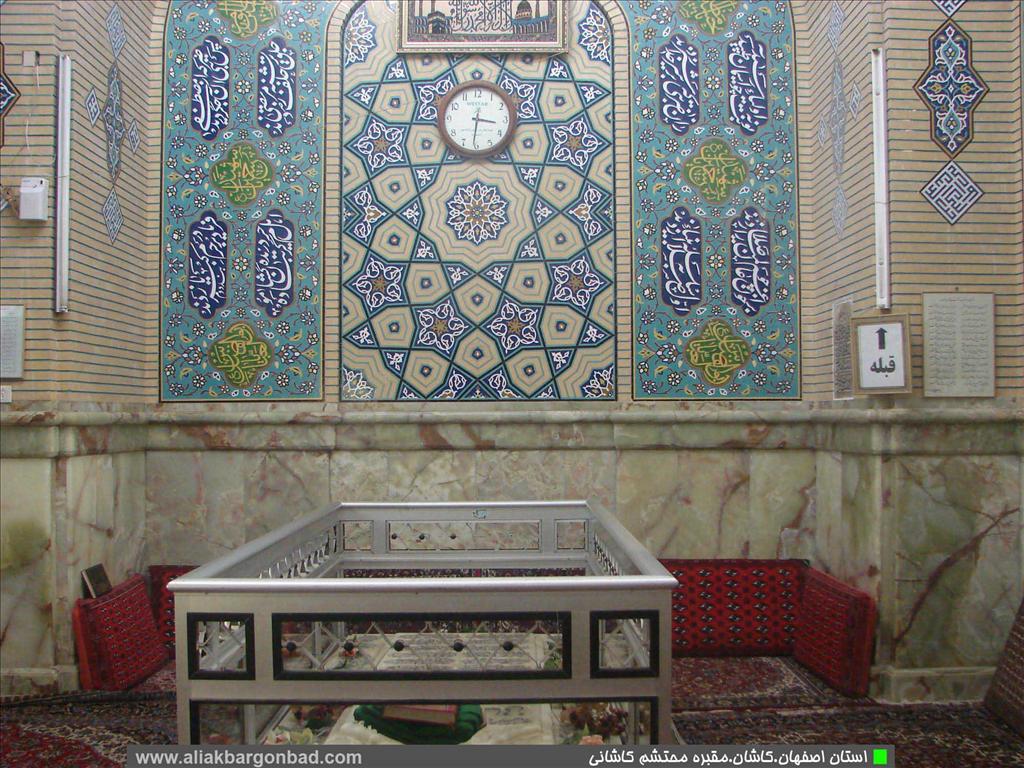
Tomb of Mohtashim Kashani in Iran
Dr.Mazhar
Naqvi
Have you heard of ‘Dawazdeh Band’? The answer to the
question will mostly be in negative. There is virtually no awareness about the
first elegy (Marsiya) written in the history on the troubles and martyrdom of
Imam Hussain in India now. This is quite surprising as the translation of Dawazdeh
Band was also released in early 2015 both in Urdu and Hindi at the shrine of
Qazi Nurullah Shustri in Agra. But since then, there has been no effort to
ensure availability of the translated version of the elegy written Persian by
16th century poet Mohtashim Kashani.
Mohtashim was born in 1500.His father was a prominent
cloth merchant. He also began as a cloth merchant but lost interest in business
after suffering a setback. He dedicated his life to composition of elegiac poetry.
Mohtashim’s fame today rests almost
entirely on his elegy in twelve strophes (Davazdeh-Band)
on the martyrdom of Imam Hussain
at Karbala in 680 AD. This poem earned him tremendous popularity in his lifetime. The contemporary literary biographer
Awḥadi
Balyani has remarked “if his poetry were
limited to this one work, it would be enough”. E. G. Browne also praises the work as “true pathos and religious feeling” expressed
in the “extraordinarily simple and direct” language of the poem.Even a Marxist
critic like Jan Rypka is taken by its “charm of genuine sincerity and
intimacy.” Recently, Karen Ruffle has pointed out how Mohtashim integrated the
pre-Islamic Arabic tradition of women’s elegy
into Muharram ceremonies that had
received a new impetus under the Safavid
empire.
The poem reached the peak of its popularity
during the Qajar period, generating dozens of responses and imitations.So long as Persian remained a popular language,
recital of Dawazdeh Band was an integral part of Muharram mourning in India. As
the number of Persian knowing people dwindled, recital of Kashani’s elegy also lost
touch with the Hindi-Urdu knowing generation and Dawazdeh Band became a thing
of past.
Under such a situation,Prof. Syed Azizuddin Hussain
Hamdani, Director of Rampur Raza Library and former Dean of the Faculty of
Humanities and Languages, Jamia Millia Islamia, New Delhi felt the need of Urdu
and Hindi translation of Kashani’s work so that a wider audience could
understand the famous Marsiya. He fulfilled this need in the form
of a book titled’ Dawazdeh Band-Mohtashim Kashani’ and released it at
the famous Dargah of Shustri at the invitation of Maulana Shauzab Jarvali.
Prof. Azizuddin has included the Urdu translation done
by his grandfather late Hakim Syed Riazuddin Hussain Hamdani in the book while Prof.
Balram Shukla of Sanskrit Department, University of Delhi did its hindi
translation. The translated version has a detailed introduction about the Marsiya.
Another important aspect of his book is the replication of a historic
manuscript present in the Rampur Raza Library. The translation by Dr. Balram
Shukla is also a rare achievement of 21st century literature because his
translation of the Persian Marsiya in Hindi is also in poetic
form.
Imam Hussain was the grandson of Prophet Muhammad and
he was martyred with his at Karbala by the forces of tyrant Caliph Yazid in 680
AD. Even his family members, including his six month old Hazrat Ali Asghar were
not spared. The enemies also denied access to water to Imam and his band of
followers. They killed him with three days of thirst and hunger. Imam had to
suffer because he had preferred honorable death than to give seal of approval
to Un-Islamic activities of Yazid. Since then, Karbala has been a favorite
theme of poets to highlight not only the sacrifice of Imam but also use it as symbol
against tyranny and injustice whenever it raises its head in any part of the
world. Many poets have written Marsiyas to describe the tragic
events of that battle. One of the earliest Marsiyas was written by Kashani
in 16th century. Mir Anees and Mirza
Dabeer, two famous Marsiya writers from India, took the art of Marsiya writing
to its pinnacle in 18th century Awadh. However, Kashani is a
household name still in Iran and his tomb is frequented by his admirers
regularly.(References available on request. Photo Courtesy-Google Images).
No comments:
Post a Comment